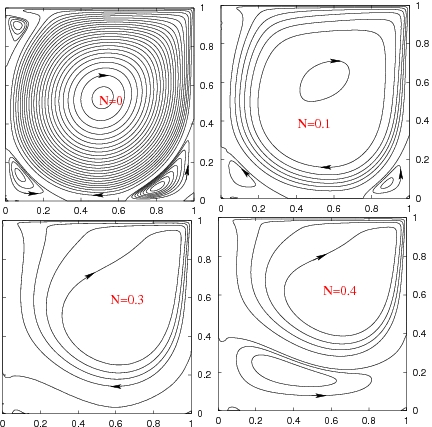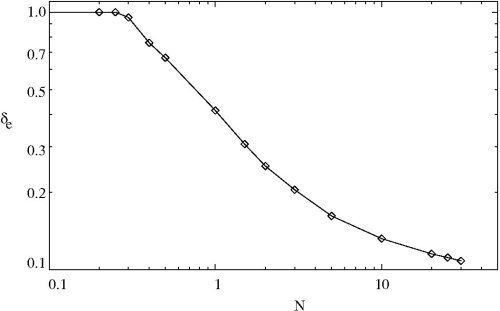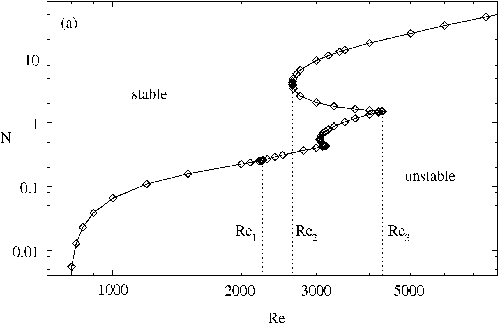V.Shatrov, G.Mutschke, G.Gerbeth
MHD-flow and 3-D linear stability analysis in
the lid-driven cavity
In strongly conducting fluids (e.g. molten metals), externally applied
magnetic fields can achieve significant control of the flow.
The 2-D hydrodynamic flow of a lid-driven cavity
remains steady until Re &asymp 7763. However,
the 3-D transition of the 2-D steady hydrodynamic
flow occurs already at Re &asymp 785.
The following figure shows how an external magnetic field
which is oriented parallel to the lid influences the
2-D steady flow at a Reynolds
number of Re=5000. Hereby, N denotes the interaction parameter.

For stronger magnetic fields, a growing number of thin eddies
arises which become slower from top to bottom. This flow is
qualitatively similar to the flow in a deep cavity. The thickness of
the top eddy versus interaction parameter is shown in the following
figure (Re=5000).

Due to the anisotropic action of the magnetic field, interesting
stability properties arise.
The following figure shows the critical interaction parameter
versus Reynolds number for the linear stability analysis with
respect to 3-D disturbances. The instability found is of
oscillatory type.

For more results, please check:
V.Shatrov, G.Mutschke and G.Gerbeth,
Three-dimensional linear stability
analysis of lid-driven magnetohydrodynamic cavity flow,
Physics of Fluids 15 (2003) 2141-2151.
Last update: August 30, 2007 Gerd Mutschke


